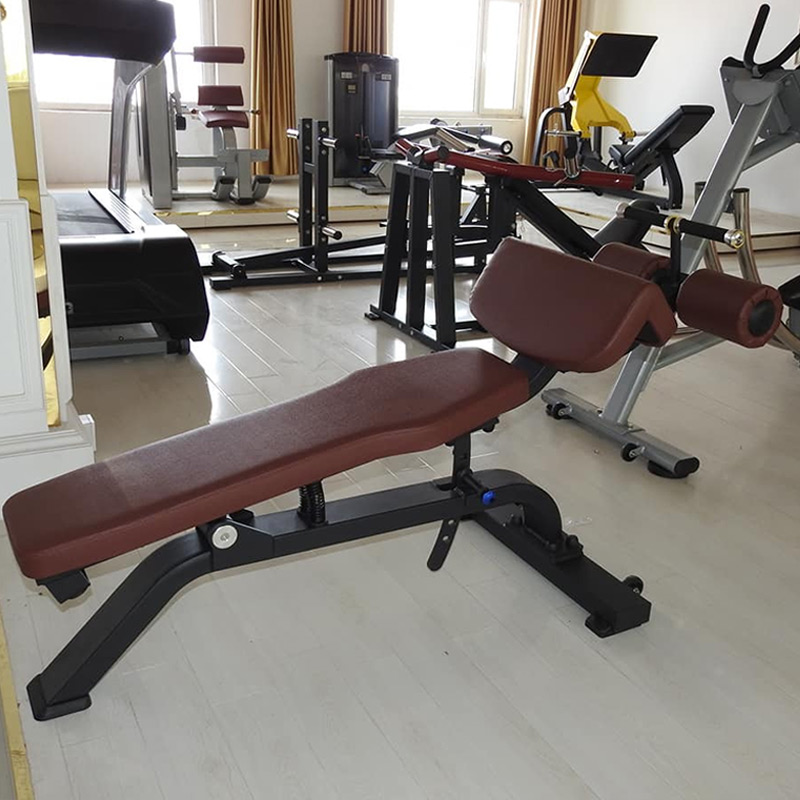An adjustable decline bench is a versatile piece of fitness equipment designed to provide support and stability for a variety of strength training exercises. Unlike flat benches or incline benches, a decline bench allows users to perform exercises at a declined angle, typically ranging from 10 to 45 degrees downward from horizontal. Here’s an introduction to an adjustable decline bench:
Features and Characteristics:
- Adjustable Decline Angle: The primary feature of an adjustable decline bench is its ability to change the angle of the backrest to create a declined position. This decline angle helps target specific muscle groups such as the lower chest and abdominals.
- Construction: Built from sturdy materials such as heavy-duty steel or metal tubing to ensure stability and durability. The bench surface is padded and covered with high-quality upholstery to provide comfort during workouts.
- Adjustable Settings: Most models allow users to adjust the decline angle using a secure locking mechanism or pins, offering flexibility in workout intensity and muscle targeting.
- Footrests or Leg Holders: Some decline benches include footrests or leg holders at the base of the bench to secure the legs during exercises, providing stability and support.
- Transport Wheels (optional): Larger or commercial-grade models may feature transport wheels for easy mobility within a gym or workout space.
Exercises:
- Decline Bench Press: The primary exercise performed on an adjustable decline bench is the decline bench press, which emphasizes the lower portion of the pectoral muscles (chest) more than a flat or incline bench press.
- Decline Sit-Ups: Perform decline sit-ups by securing the legs and lowering the upper body below the horizontal plane, targeting the abdominal muscles more intensely than traditional sit-ups.
- Weighted Decline Exercises: Use dumbbells or a barbell for exercises such as decline dumbbell presses or decline skull crushers to further challenge the muscles.
Benefits:
- Muscle Targeting: Targets specific muscle groups such as the lower chest and abdominals, providing a more comprehensive workout for upper body and core strength.
- Variety in Workout: Adds variety to workout routines by adjusting the decline angle, allowing for different exercises and muscle engagement compared to flat or incline benches.
- Core Strength: Enhances core strength and stability, particularly when performing decline sit-ups or similar abdominal exercises.
Training Tips:
- Adjustment and Safety: Always ensure the bench is securely adjusted to the desired decline angle and properly locked into place before beginning any exercise.
- Proper Form: Focus on maintaining proper form throughout each exercise to effectively target muscles and prevent injury.
- Progressive Overload: Gradually increase the weight or resistance used during exercises to challenge muscles and promote strength gains over time.
An adjustable decline bench is a valuable addition to any strength training regimen, offering versatility, targeted muscle engagement, and enhanced core strength development. Whether used in a gym or home workout space, it provides the tools necessary to achieve fitness goals and maintain overall physical health effectively.


















































Reviews
There are no reviews yet.